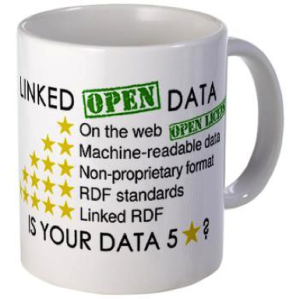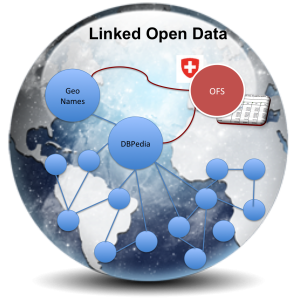This is an old revision of the document!
Linked Open Tourism Data
Link the Swiss Open Tourism Data to the World Linked Open Data.
The idea is to convert available tourism statistical data (e.g. nights, occupancy, by canton) to semantic web data (RDF), and link those data to make them part of the LOD cloud.
This project will thus fullfuill the maximum data quality according to Open Data 5 stars.

For the user, a graphical representation of the canton is provided which holds additional information (e.g. population, number of music festivals). This information forms the basis for further navigation. The additional data is gathered via smart linkage of different open data sources.
This demonstrator, as it is, is no killer app for the end-user yet. But everything is ready to move further and show the full potential of linked open data: for instance, what about comparing the nightstays with the meteo situation at that time ? or special events that took place in different cities ? or adding the nationality dimension about the nightstays ? All of this is easier done with semantic web technologies and the growing web of data (web 3.0).
Approach
To create an added value, different information from various data sources must be linked together. Many data sources implement the RDF format to describe their meta data. That's why we're going to use as much RDF data sources as possible.
Those statistical data will thus be linked to other Linked Open Data sets (as DBPedia, geoNames), and the information from the different sources can thus be queried at will.
Some of the main difficulty in the beginning is the transformation of existing (meta) data into the RDF language. We started with an excel file and used Google Refine and its RDF extension to transform those raw, messy data.
We based the RDF schema on the RDF Data Cube and designed a few more properties to represent the dimensions about time/location/nightstay. The DataSet could be discribed using the new W3C standard Data Catalog Vocabulary (DCAT)
Linked where defined between the swiss cantons and their DBPedia URIs. Then geoNames about.rdf files about the cantons where also downloaded. The link between geoNames and DBPedia already exists in those about.rdf files…that's where the “magic” starts to operate.
See also all the links from DBPedia to other datasets.
We did add extra links to a very valuable but non RDF data source (so far 
To visualize that data, we're currently using an svg+javascript approach.
Data
Technology
- html/css/js
- d3.js
- Style for Markup: Twitter Bootstrap (http://twitter.github.com/bootstrap)
- Programming language: PHP (http://php.net)
- Data model scheme: RDF (https://en.wikipedia.org/wiki/Resource_Description_Framework)
Team
- Sabrina Huth
- Sebastian Veit
Links
- Relevant documentation …
- Blog or forum posts …
